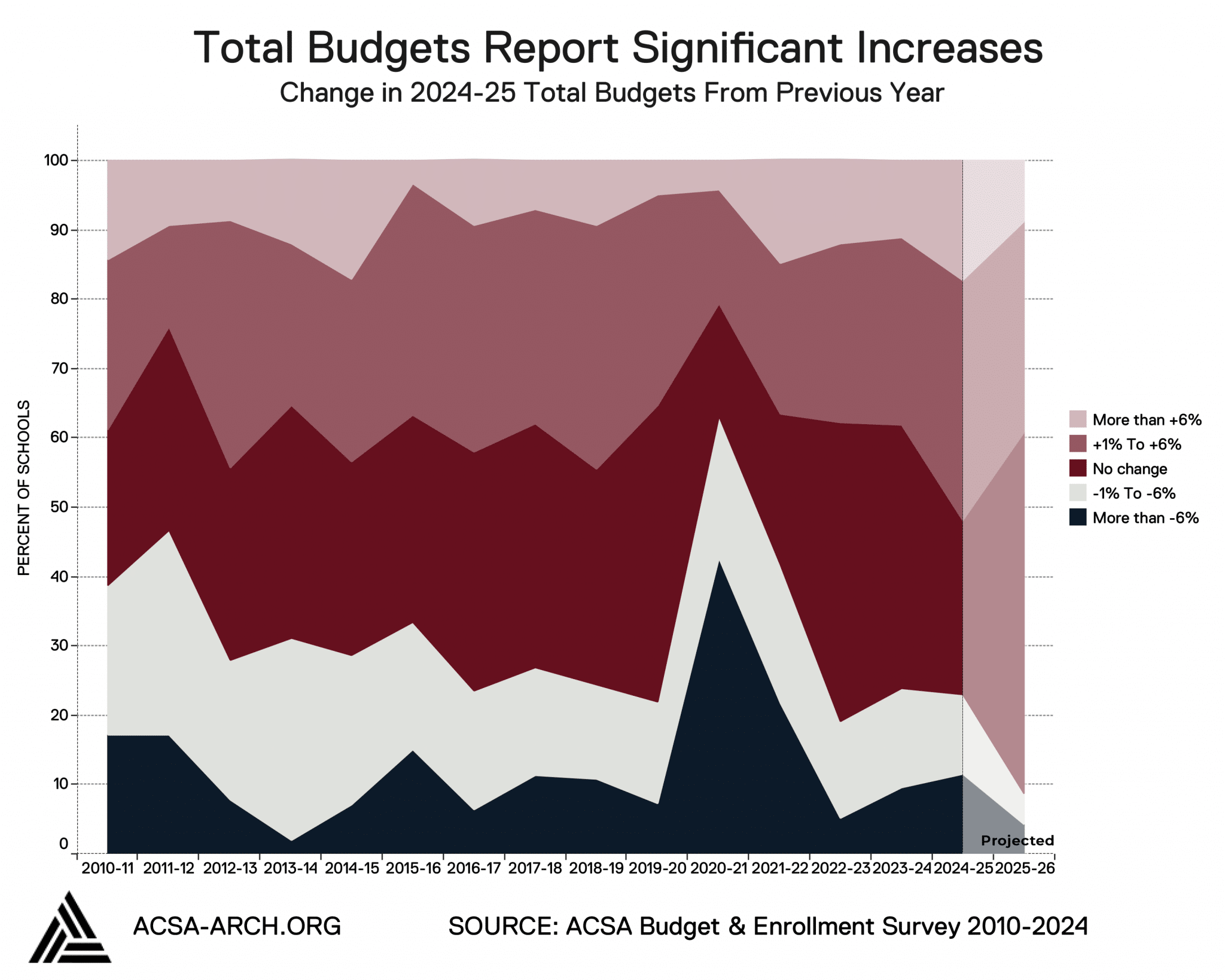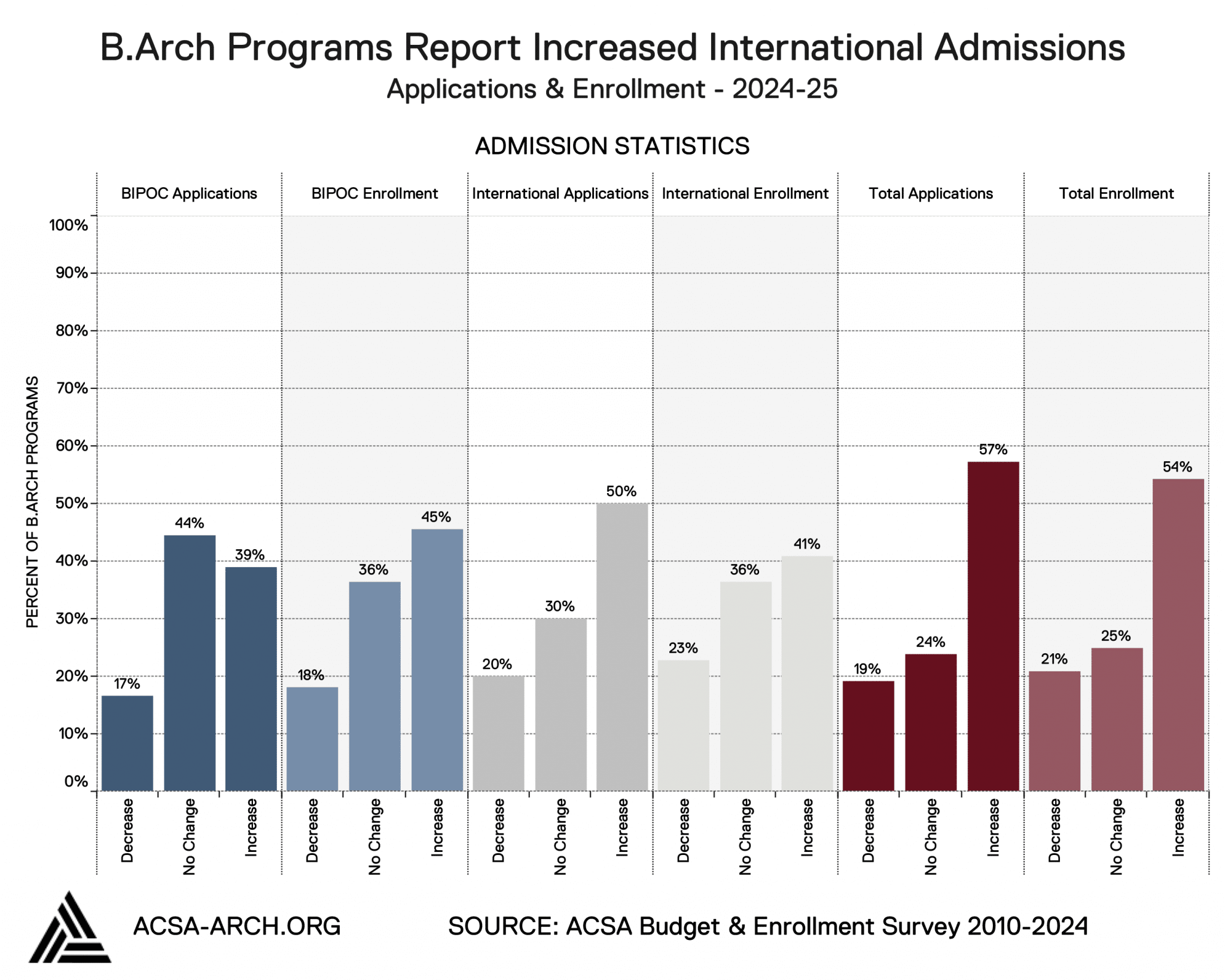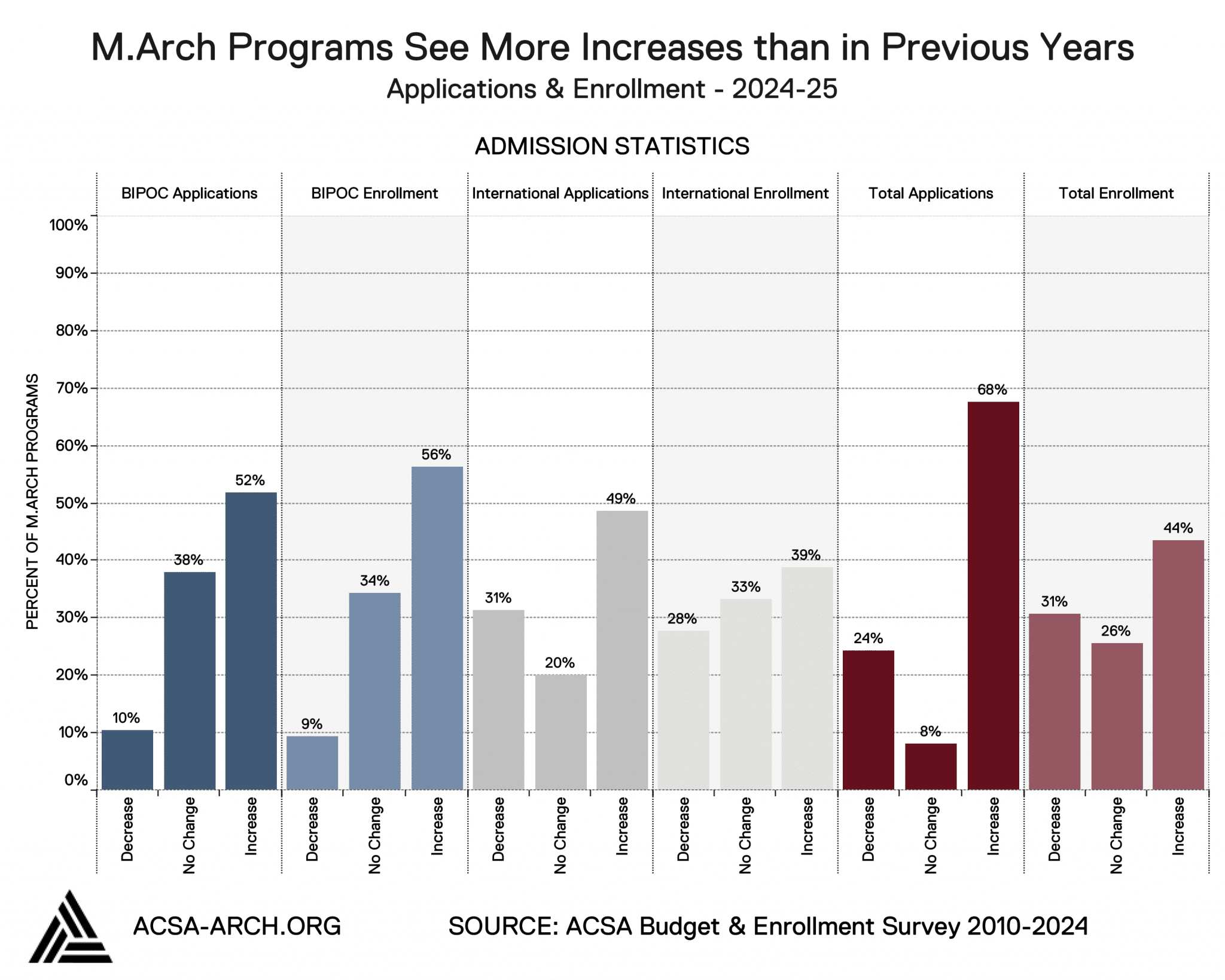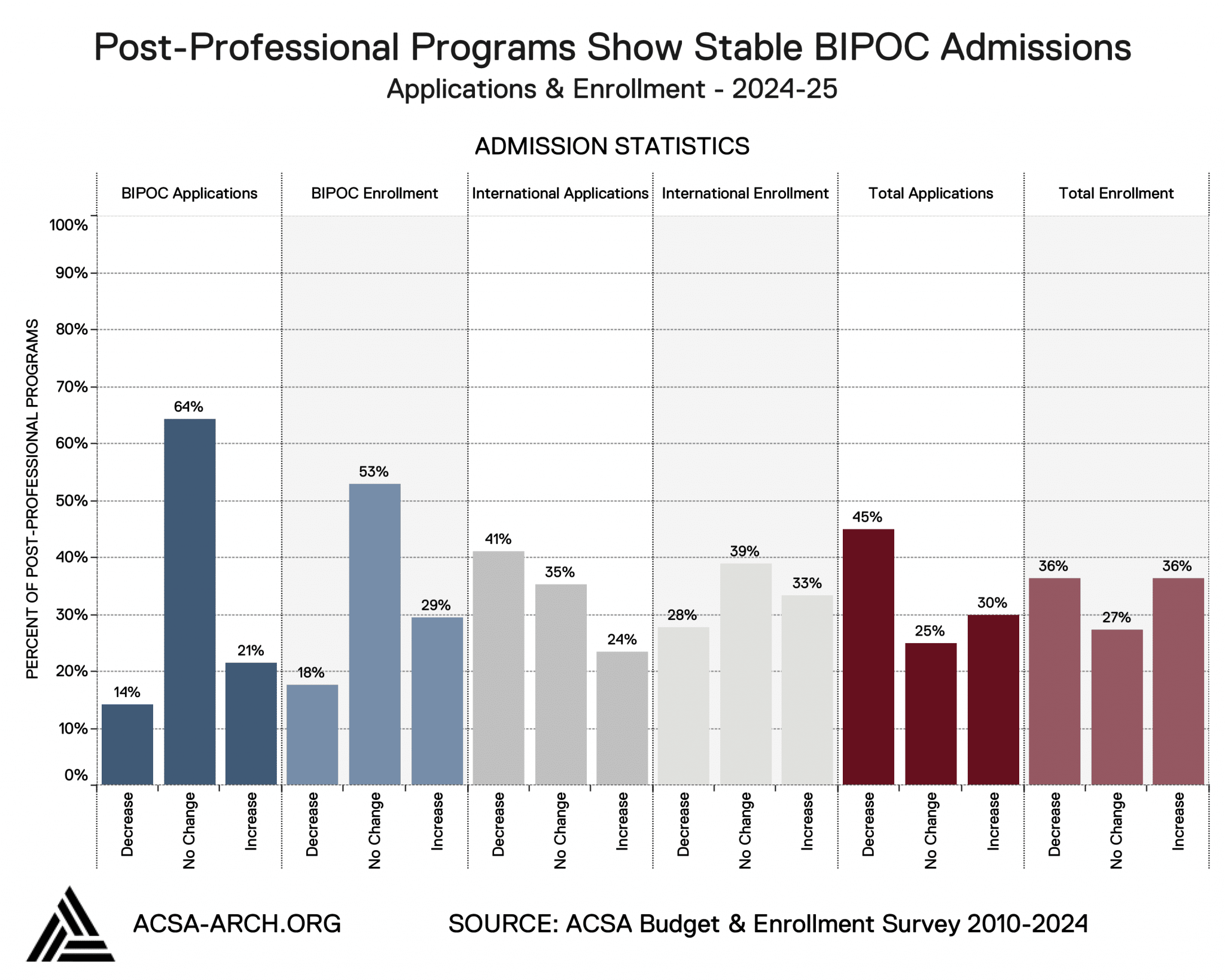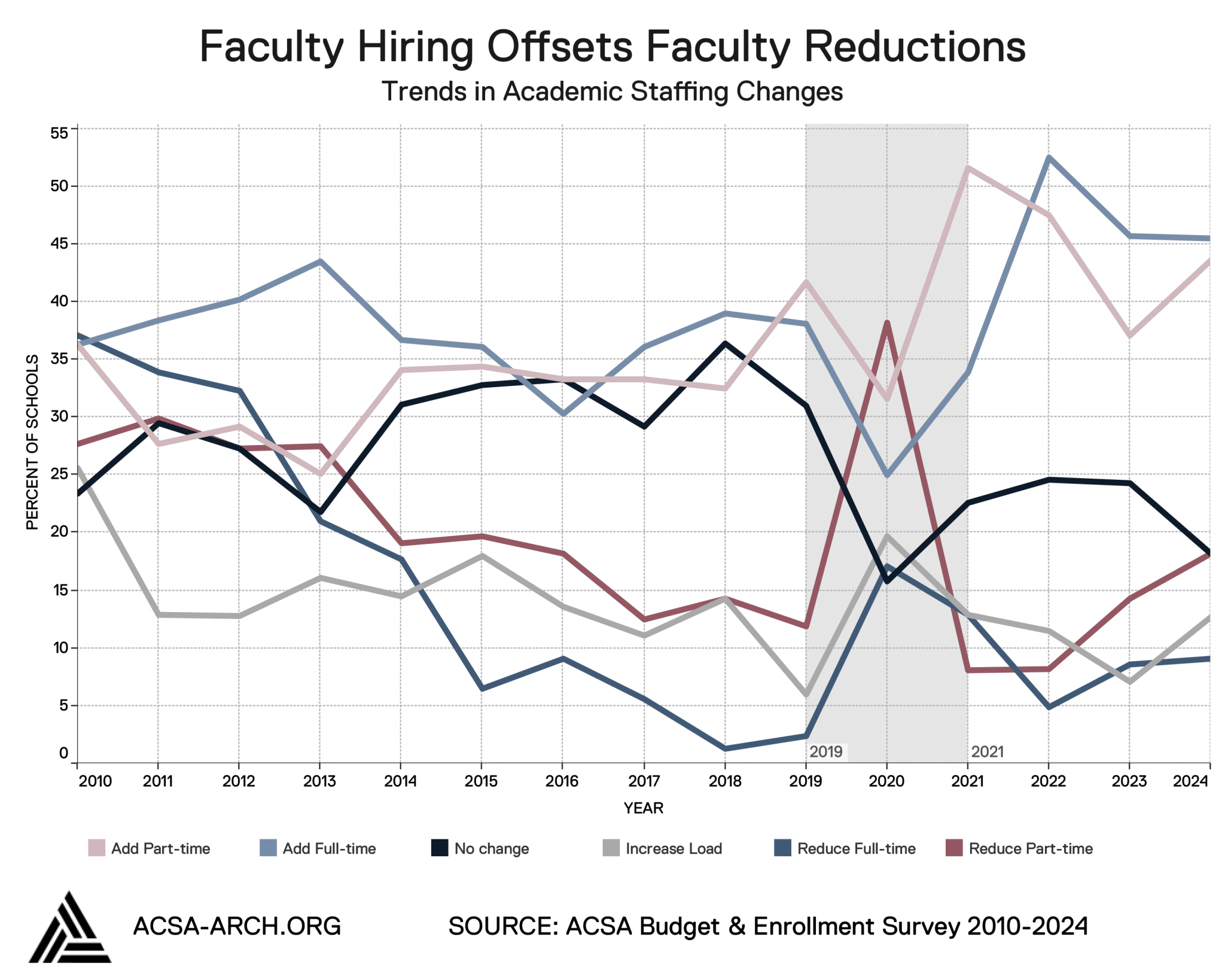JANUARY 2025
2024-2025 ACSA Budget and Enrollment Survey Results
Budget and Enrollment Survey Results
This year’s Budget and Enrollment Survey reflects changes in budgets, applications, enrollment, academic staffing, and curricula at 65 member schools. The survey was made available to ACSA Full, Candidate, Canadian, 2-year, and 4-year members. The survey is conducted annually and this report includes data collection dating as far back as the 2010-11 academic year. The purpose of this report is (1) to provide a cross-section of information regarding the current status of funding and admissions at architecture schools, (2) identify any ongoing trends survey results may suggest, and (3) gauge the pulse of faculty recruitment across architectural education. An analysis of the survey findings are provided below.
PART 1: ARCHITECTURE PROGRAM BUDGETS
For the first time in the history of the ACSA Budget and Enrollment survey, more than half of participating programs reported an increase to overall budgets. As compared to the previous year, total budgets across architecture programs showed a significant trend upward (from 38% last year to 52% this year) in the percentage of schools reporting an increase. While the percentage of programs that reported total budget decreases remained stable, the increase in budgets is one of many indicators that architectural education remains healthy. Looking forward, program administrators predict stable projections for the 2025-26 school year with the majority of schools reporting no change.
With little movement in the percentage of school reporting increases or decreases, travel budgets remained stable. Nearly fifty-two percent (51.9%) of the participating respondents noted no changes in their travel budgets, making pandemic-level decreases in travel spending a distant memory. Projections for the 2025-26 school year are expected to trend upward suggesting increased faculty travel.
By just one percentage point higher than travel budgets (52.9%), discretionary budgets from 2024-25 follow a trend similar to travel budgets. Overall, the little to no movement in discretionary spending budgets serves as another healthy indicator for architectural education. This is the fourth consecutive year that more than half of responding schools reported no change.
PART 2: ARCHITECTURE PROGRAM ENROLLMENT
The majority of pre-professional programs reported an increase in applications (71%) and enrollment (59%). Recent years of ACSA research indicate that part of this stable increase in applications and enrollment can be attributed to students who identify as Black, Indigenous, or another racialized people group (BIPOC) which has also consistently reported a majority of schools showing increases in applications (50%) and enrollment (63%) over the past 4 years.
Compared to Pre-professional, M.Arch, and Post-professional programs reporting this year, B.Arch programs reported the largest percent of increases in applications (50%) and enrollment (41%) from international students. Like pre-professional programs, the majority of B.Arch programs reported an increase in applications (57%) and enrollment (53%).
When compared to all the architecture program types, M.Arch programs reported the most consistent increases of applicants and admits across students who identify as Black, Indigenous, or other racialized people group, international students, and the total population. The strongest metric reported this year is the sixty-eight percent of schools reporting an increase in applications. While approximately 1 out of every 4 schools reported a decrease in applications and/or enrollment, M.Arch programs have trended upward compared to last year.
Overall, post-professional programs reported no change in BIPOC student applications and enrollments as the most frequently selected option for programs. Additionally, less than 20% of participating schools reported a decrease in applications and enrollment but programs reported substantial decreases for international student applications (41%) and total applications (45%). Post-professional programs at architecture schools tend to be significantly smaller than accredited programs and as such a small change in numbers can have a large impact.
PART 3: FACULTY FINDINGS
When examining data on current trends in faculty dynamics, this year’s report shows stability for full-time and part-time faculty. For 2024-25, the percentage of schools reporting a small increase in a reduction of full-time (9%) and part-time faculty (18%) is minimally higher than last year. The most notable finding for faculty hiring is the increase to full-time faculty teaching load. Contextual research for faculty recruiting shows that the landscape of higher education is under constant pressure to evolve and a wave of faculty retirements alongside new technology impact all disciplines.
ACSA would like to thank all of the schools that shared their data in regards to budget, enrollment, applications and academic staffing. School participation is integral in our quest to provide a full and accurate picture of these dynamics across architecture schools.
Questions
Kendall A. Nicholson
Senior Director of Research, Equity, and Education
202-785-2324
knicholson@acsa-arch.org

 Study Architecture
Study Architecture  ProPEL
ProPEL 